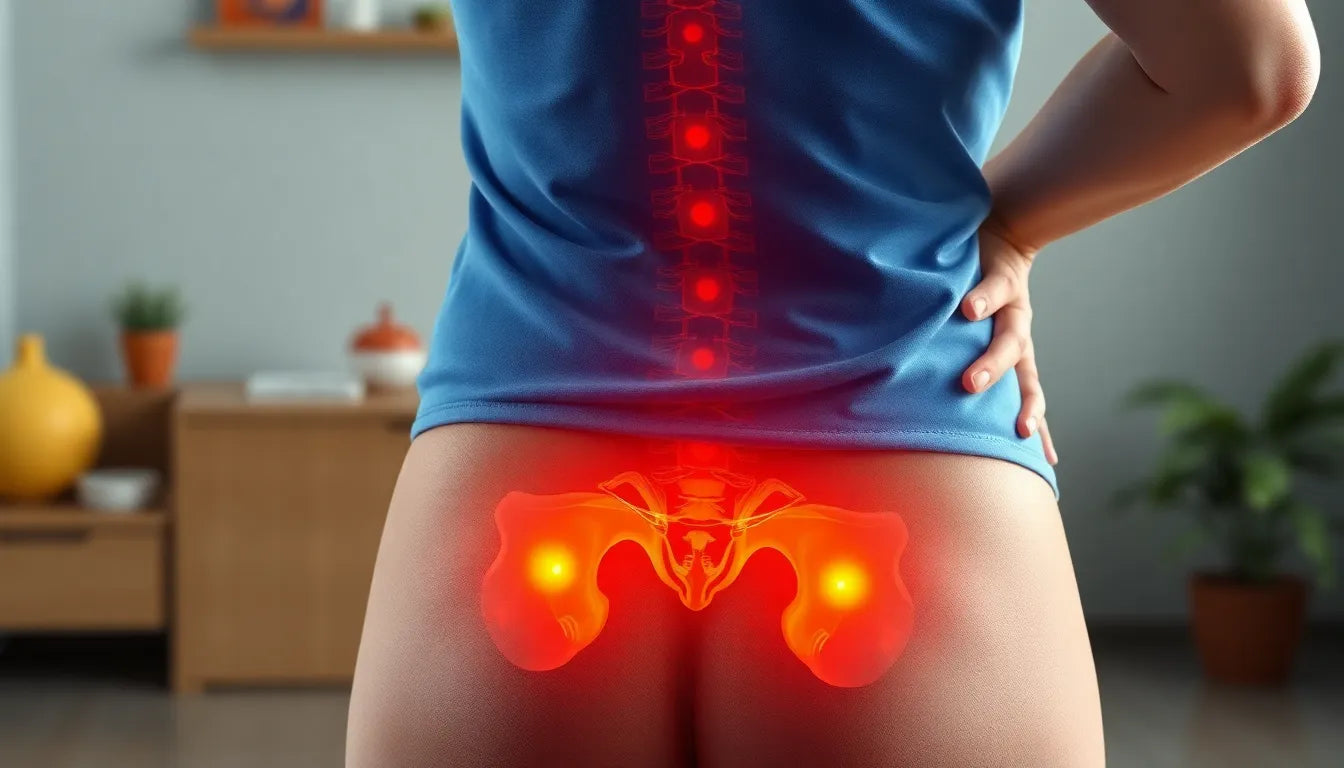Neuropathic pain in cancer is a significant and often debilitating challenge faced by many patients. This type of pain is a complex, chronic condition that arises when nerve fibers are damaged, dysfunctional, or injured, usually as a result of cancer itself or its treatments. The pain is typically described as burning, stabbing, or tingling sensations, which can severely impact a patient's quality of life, affecting both physical and emotional well-being. Understanding and managing neuropathic pain is crucial for improving patient outcomes and enhancing their overall quality of life.
Understanding neuropathic pain in cancer
Neuropathic pain is prevalent among cancer patients, affecting approximately 34% of those with advanced stages of the disease. It often presents as a combination of neuropathic and nociceptive pain, making it a complex condition to diagnose and treat. The sensations associated with neuropathic pain can range from mild discomfort to severe, debilitating pain that significantly disrupts daily activities and mental health. Patients often report feelings of frustration and helplessness, as the pain can persist despite treatment efforts.
The importance of effective management
Effectively managing neuropathic pain in cancer is essential not only for physical relief but also for emotional stability and mental health. Patients experiencing this type of pain often face challenges in maintaining their daily routines and social interactions, which can lead to feelings of isolation and depression. Therefore, awareness and understanding of this condition are vital for both patients and healthcare providers. By exploring the causes, symptoms, and potential relief strategies, patients can find hope and relief in their journey.
This blog post aims to delve into the intricacies of neuropathic pain in cancer, shedding light on its causes, symptoms, and the various strategies available for relief. We will explore both pharmacological and non-pharmacological treatments, highlighting the importance of a multidisciplinary approach to pain management. Through this comprehensive exploration, we hope to provide valuable insights and support to those navigating the challenges of neuropathic pain in cancer.
Causes and symptoms of neuropathic pain in cancer
Neuropathic pain in cancer patients can be attributed to several factors, primarily stemming from the disease's direct impact on the nervous system. One of the most common causes is the direct invasion or compression of nerve tissue by the cancer itself. Tumors can press against nerves, leading to damage and the subsequent development of neuropathic pain. Additionally, cancer treatments such as chemotherapy and radiation are known to cause nerve damage. Chemotherapy-induced peripheral neuropathy (CIPN) is a well-documented side effect, where the toxic effects of the drugs result in nerve damage, leading to pain and discomfort.
The symptoms of neuropathic pain are distinct and can vary greatly among individuals. Commonly, patients report experiencing burning, stabbing, or tingling sensations, which can be persistent and challenging to manage. These symptoms are not only physically debilitating but also have profound emotional and psychological effects. Patients often experience anxiety and depression as a result of chronic pain, which can further complicate their overall health and quality of life.
Personal stories and testimonials from patients living with neuropathic pain highlight the human aspect of this condition. Many describe a constant battle to find effective relief and the emotional toll it takes on their daily lives. These narratives underscore the importance of comprehensive pain management strategies that address both physical and emotional needs.
Treatment options for neuropathic pain in cancer
Managing neuropathic pain in cancer requires a multifaceted approach that combines both pharmacological and non-pharmacological treatments. First-line pharmacological treatments typically include medications such as gabapentin, pregabalin, serotonin-norepinephrine reuptake inhibitors (SNRIs) like duloxetine and venlafaxine, and tricyclic antidepressants. These medications are chosen for their ability to modulate nerve pain, providing relief for many patients. However, opioids are generally reserved for severe cases due to their potential side effects and risk of dependency.
While cannabinoids have been explored as a treatment option, they are generally discouraged due to a lack of conclusive evidence supporting their efficacy in managing neuropathic pain in cancer. Therefore, it is crucial for patients and healthcare providers to focus on well-established treatment options and tailor them to individual needs.
Non-pharmacological and supportive therapies play a vital role in managing neuropathic pain. Mindfulness practices, cognitive behavioral therapy, and psychoeducation can be incredibly beneficial in helping patients cope with pain and its emotional impacts. These therapies help patients develop coping strategies and improve their mental health, which is often affected by chronic pain. Additionally, involving palliative care specialists can be crucial for complex cases, ensuring a comprehensive approach to pain management.
Physical activity and ergonomic aids, although mentioned peripherally in existing literature, offer potential benefits that Anodyne can explore further. Incorporating gentle exercises and using ergonomic products can help alleviate some of the physical discomfort associated with neuropathic pain, improving overall quality of life.

Women's Posture Shirt™ - Black
Patented shirt supports posture, relieves pain, and improves muscle awareness for daily comfort.

Men's Posture Shirt™ - White
Patented shirt stimulates muscles, relieves back pain, and enhances posture for work or leisure.
Conclusion: moving forward with hope
Understanding the causes and symptoms of neuropathic pain in cancer is essential for developing effective management strategies. With a combination of pharmacological treatments and supportive therapies, patients can find relief and improve their quality of life. By highlighting patient experiences and focusing on a holistic approach, Anodyne aims to provide valuable insights and support for those navigating the challenges of neuropathic pain in cancer. Through continued research and innovation in treatment options, there is hope for better pain management and improved patient outcomes.
ongoing challenges and individualized treatment
Managing neuropathic pain in cancer presents ongoing challenges due to its complex nature, often involving a mix of neuropathic and nociceptive pain. This complexity is compounded by psychological factors such as anxiety and depression, which can exacerbate the pain experience. Accurate diagnosis is crucial but can be difficult due to the overlapping symptoms and the multifaceted nature of the pain mechanisms involved.
Individualized treatment plans are essential in addressing neuropathic pain in cancer. These plans should be tailored to the specific pain mechanisms at play and consider the patient's overall condition, including mental and social factors. By focusing on the unique needs of each patient, healthcare providers can develop more effective pain management strategies that enhance the patient's quality of life.
A multidisciplinary approach is often required to manage neuropathic pain effectively. This involves a team of healthcare professionals, including oncologists, pain specialists, psychologists, and physical therapists, working together to provide comprehensive care. Such an approach ensures that all aspects of the patient's pain and overall health are addressed, leading to better outcomes.
frequently asked questions
What are neuropathic pains in cancer?
Neuropathic pains in cancer are complex, chronic pain conditions that arise when nerve fibers are damaged, dysfunctional, or injured. This can occur due to the cancer itself, such as when tumors invade or compress nerve tissue, or as a side effect of cancer treatments like chemotherapy and radiation.
How can neuropathic pain in cancer be managed?
Management of neuropathic pain in cancer typically involves a combination of pharmacological and non-pharmacological treatments. Pharmacological treatments may include medications such as gabapentin, pregabalin, SNRIs, and tricyclic antidepressants. Non-pharmacological approaches include mindfulness, cognitive behavioral therapy, psychoeducation, and physical activity. A multidisciplinary approach involving various healthcare professionals is often recommended for comprehensive management.
Are there any lifestyle changes that can help with neuropathic pain?
Lifestyle changes can play a supportive role in managing neuropathic pain. Engaging in regular physical activity, using ergonomic aids, and maintaining a healthy diet can help alleviate some symptoms. Additionally, incorporating relaxation techniques and stress management strategies can improve overall well-being and potentially reduce pain.
What should I do if my current pain management plan isn’t working?
If your current pain management plan is not providing adequate relief, it is important to consult with your healthcare provider. They can reassess your condition and consider adjustments to your treatment plan, which may include trying different medications, incorporating additional therapies, or involving specialists in pain management.
Kilder
- DMCG. (2022). "Kliniske Retningslinjer for Smerter." Danish Multidisciplinary Cancer Groups.
- Medicin.dk. (2023). "Neuropatiske Smerter." Pro.medicin.dk.
- Ugeskriftet. (2023). "Kemoterapiinduceret Perifer Neuropati blandt Brystkræftoverlevere." Ugeskrift for Læger.
- NNBV. (2023). "Behandling af Neuropatiske Smerter." Nationalt Netværk for Behandling af Voksne.
- DASAIM. (2023). "National Behandlingsvejledning for Neuropatiske Smerter." Dansk Selskab for Anæstesiologi og Intensiv Medicin.
- Kræftens Bekæmpelse. (2023). "Smerter som Senfølge." Cancer.dk.
- Sundhed.dk. (2023). "Smertebehandling af Langvarige eller Vedvarende Ikke-Cancer Smerter." Sundhed.dk.


















